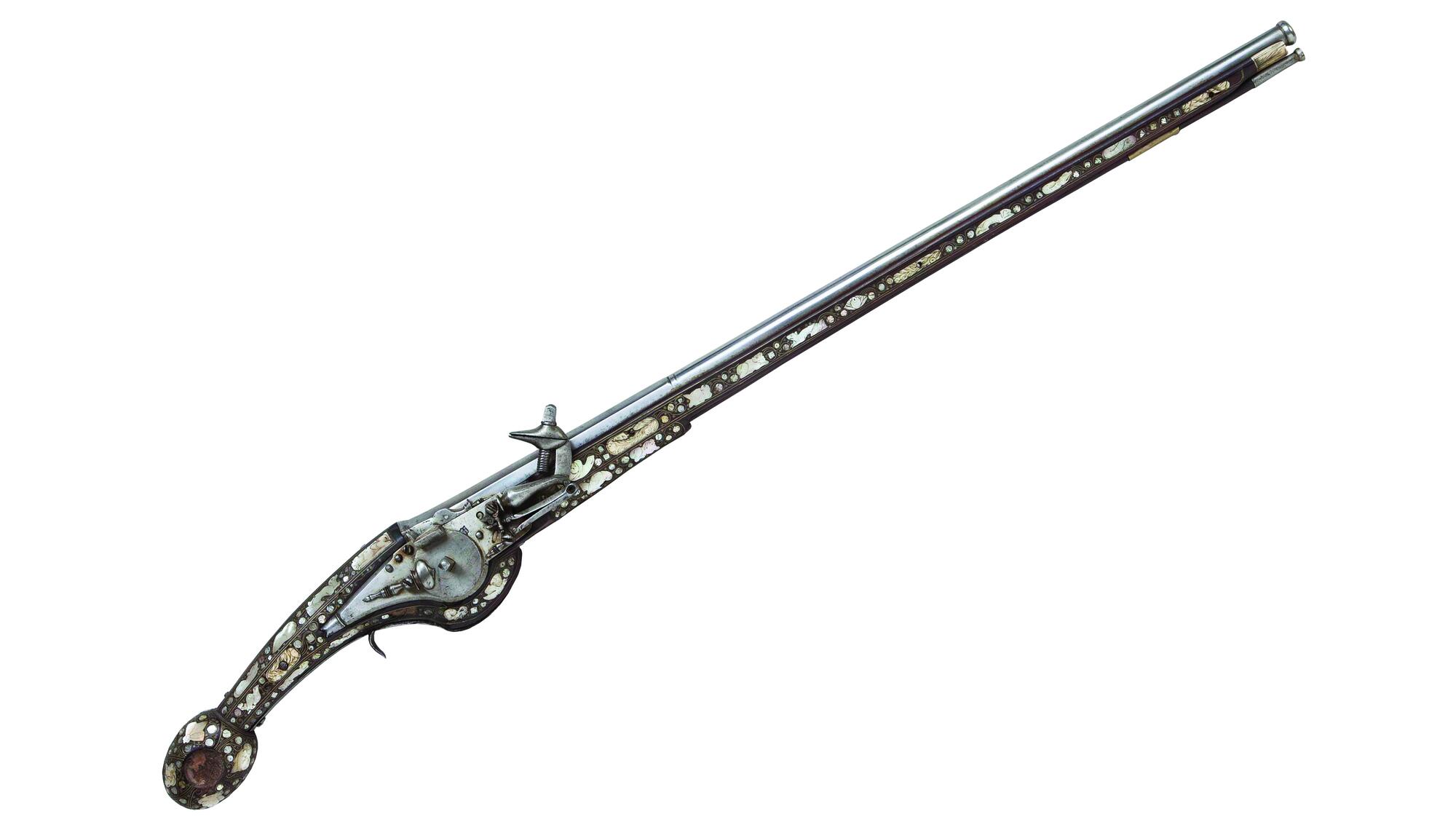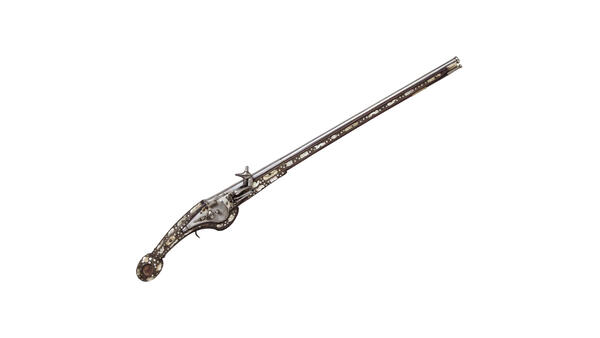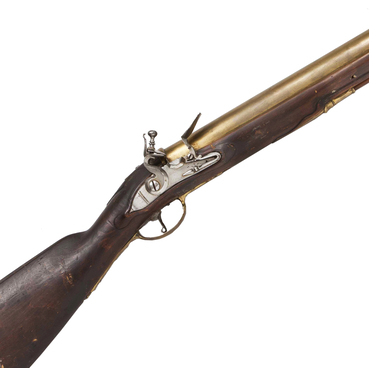The collection of hunting weapons in the Gatchina Palace and Estate Museum contains a wheellock pistol made by an unknown gunsmith around 1600. It is the earliest sample of French weapons in the Gatchina collection. This pistol showcases the features typical for the French style of firearms of that time. First of all, it is the size of the pistol. Its overall length is 82.6 cm, and its barrel length is 62.4 cm.
Compare it with the barrel length of Kalashnikov rifle made in 1974 — 41.5 cm. The size is typical for the early 17th century when pistols reached their maximum length. Another interesting feature is the wheellock construction which was used only on the territory of France in the second half of the 16th century and in the early 17th century. The V-shaped mainspring is not screwed to the lock plate as in ‘standard’ wheellocks. Instead it is fixed inside the stock with a pin. This system allows to make the lock plate smaller and as a consequence reduce the size and weight of the stock.
Since the mainspring is located along the longitudinal axis of the stock and its lower part is fixed in a special notch in the stock, the trigger has to be moved a bit to the side, away from the central line. The wheel shaft is not fixed on the lock plate with a special bracket, but goes through the stock and is fixed in a hole of the plate on the left side of the stock. The lock plate is flat. To the right of the wheel there is a mark with the letter ‘H’. The cap of the fore-end — the front part of the stock running along the barrel — is made of ivory and decorated with an engraved stylised floral pattern.
All the surface of the stock is inlaid with brass stripes and inserts in the form of plant stems and tiny stars as well as with engraved mother of pearl inserts in the form of leaves, flowers, birds and animals. The opposite side of the stock is decorated with images of a sphinx, a fish, a snail and a savage with a cudgel.


